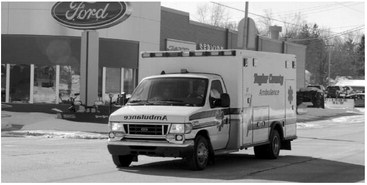No easy road ahead for ambulance coverage


A decades-long relationship to provide ambulance service to county residents is teetering on a knife’s edge over ongoing dissatisfaction with coverage in rural areas and spirali...


A decades-long relationship to provide ambulance service to county residents is teetering on a knife’s edge over ongoing dissatisfaction with coverage in rural areas and spirali...